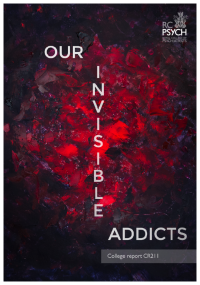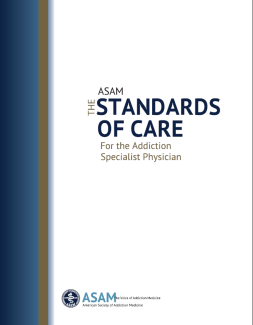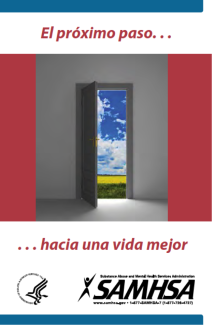Search
Young Adults’ Reasons for Dropout from Residential Substance Use Disorder Treatment
Abstract
Dropout from substance use disorder treatment is usually investigated and understood from a perspective of quantitative patient-related factors. Patients’ own perspectives (user perspective) are rarely reported. This study...
Effectiveness Bank Matrix Cell: Getting the Balance Right in Medication-Based Treatment
Seminal and key studies on the role of management in medical interventions for drug dependence. Commentary considers how medication-based treatment can be (re)oriented to long-term recovery, the importance of the right dose, and whether we...
Implementing a Mobile Health System to Integrate the Treatment of Addiction into Primary Care
A recent study carried out by a team of researchers from the University of Wisconsin School of Medicine and Public Health examined the use of mobile health technology in the United States’ health care system.
Published in the Journal of...
New Dataset Made Available from Study of Adolescent Brain Development
In February of 2018 the US National Institute of Health (NIH) released the first dataset from an "unprecedented study of adolescent brain development", the Adolescent Brain Cognitive Development (ABCD) study.
The study has, to date...
Sexual Minority Youth Continue to Smoke Cigarettes Earlier and More Often Than Heterosexuals: Findings from Population-Based Data
Research carried out in North America has highlighted differences in youth smoking habits for individuals who identify as heterosexual and those who identify as Lesbian, Gay or Bisexual (LGB).
The study builds on historical evidence to...
A Randomized, Open Label Trial of Methadone Continuation versus Forced Withdrawal in a Combined US Prison and Jail: Findings at 12 Months Post-Release
Our Invisible Addicts
Older adults are often overlooked or even illegally excluded from treatment and support. A recent report found that 75% of residential rehabilitation centres had arbitrary upper age limits and had limited or no disabled access, and follows...
Tratamiento de tabaquismo intenso después de un infarto agudo de miocardio
Resumen
El tabaquismo es una enfermedad crónica que afecta a una quinta parte de nuestra población. No obstante, la mayoría de los fumadores no busca tratamiento de su enfermedad ni la considera tal. Algunos pacientes logran controlar...
Methadone Induction in Primary Care for Opioid Dependence: A Pragmatic Randomized Trial
From France the first study to randomly allocate patients to start methadone maintenance either in primary care or at a specialist centre found primary care more attractive to patients and no less safe or effective at reducing street-opioid...
The American Society of Addiction Medicine Standards of Care
This document is a useful resource for physicians that manage care services of patients with drug use disorders and its related consequences. It is intended to support quality improvement activities conducted by health care provider systems...
Genomic and Bioinformatics Approaches for Analysis of Genes Associated with Cancer Risks Following Exposure to Tobacco Smoking
Cancer is a significant health problem in the Middle East and global population. It is well established that there is a direct link between tobacco smoking and cancer, which will continue to pose a significant threat to human health. The...
The next step towards a better life
The purpose of this guide is to give people an idea of what you can expect when they have finished the process of detoxification. Ideas to help people stay away from alcohol and other drugs. Also explains the stages of the recovery, as well...
The Proportion of Dementia Attributable to Common Modifiable Lifestyle Factors in Barbados
Abstract
Objective: To understand what number and proportion of dementia cases in Barbados are attributable to modifiable lifestyle factors and what effect a reduction in these risk factors would have on future dementia prevalence.
Me...
Differences between Psychotic Disorders with Concurrent Cannabis Use and Cannabis-Induced Psychoses
Abstract
Background: The fact that Cannabis use can lead to psychotic symptoms has been recognized years ago. Moreover, when the patient is using cannabis, the distinction between a primary psychotic disorder and a cannabis-induced...
Transcranial Magnetic Stimulation of Medial Prefrontal and Cingulate Cortices Reduces Cocaine Self-Administration: A Pilot Study
Background: Previous studies have shown that repetitive transcranial magnetic stimulation (rTMS) to the dorsolateral prefrontal cortex may serve as a potential treatment for cocaine use disorder (CUD), which remains a public health problem...
A Randomized, Open Label Trial of Methadone Continuation versus Forced Withdrawal in a Combined US Prison and Jail
Highlights
- MMT during incarceration leads to lower injection drug and heroin use.
- MMT during incarceration leads to fewer non-fatal overdoses.
- MMT during incarceration leads to higher rates of engagement in treatment.
Abstract
Re...
Workforce Development: Is There a Paradigm Shift?
This editorial examines whether training and education in the addictions field has considerably made a difference in workforce development. It concludes that transformational change has not occurred because beyond training and education, a...
Supporting Nurse Mentors to Reduce the Barriers to Implementing Alcohol Interventions and Brief Advice (IBA) in Primary Care
Key Findings
- The findings of this project suggest that providing a relatively low level of support to nurse mentors based in primary care leads to a significant increase in the delivery of IBA.
- There was a marked increase in the...
Prevalence and Factors Associated with Exposure to Secondhand Smoke (SHS) among Young People
Abstract
Background: Annually, 600 000 deaths are attributed to exposure of non-smokers to secondhand smoke (SHS). These include 165 000 among children, about 60% of which occur in Africa and Southeast Asia. As of 2017, only seven...





